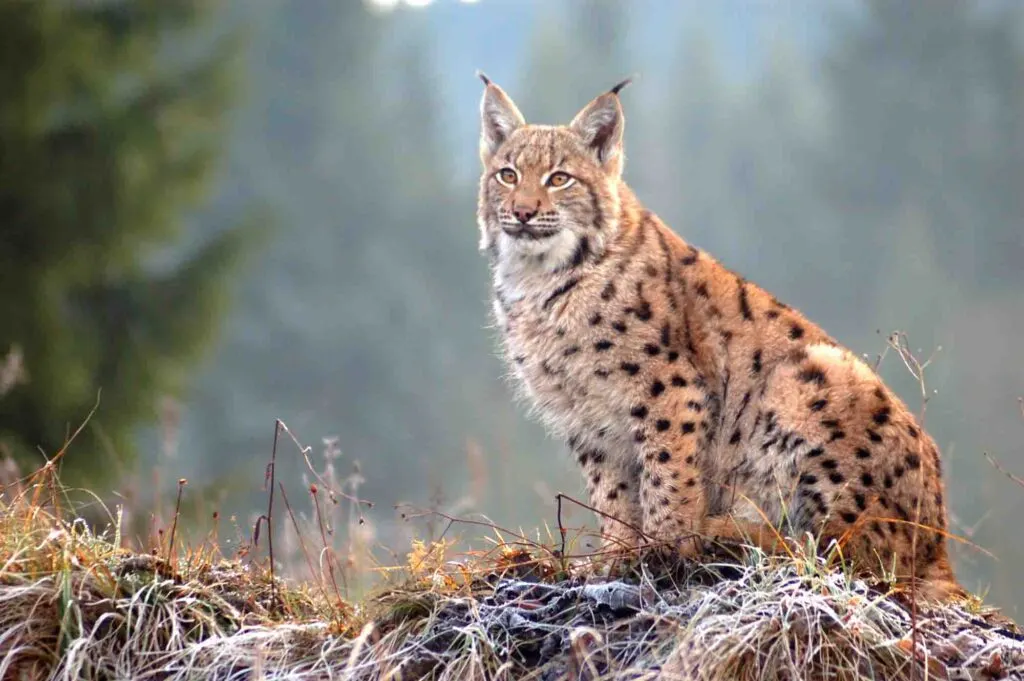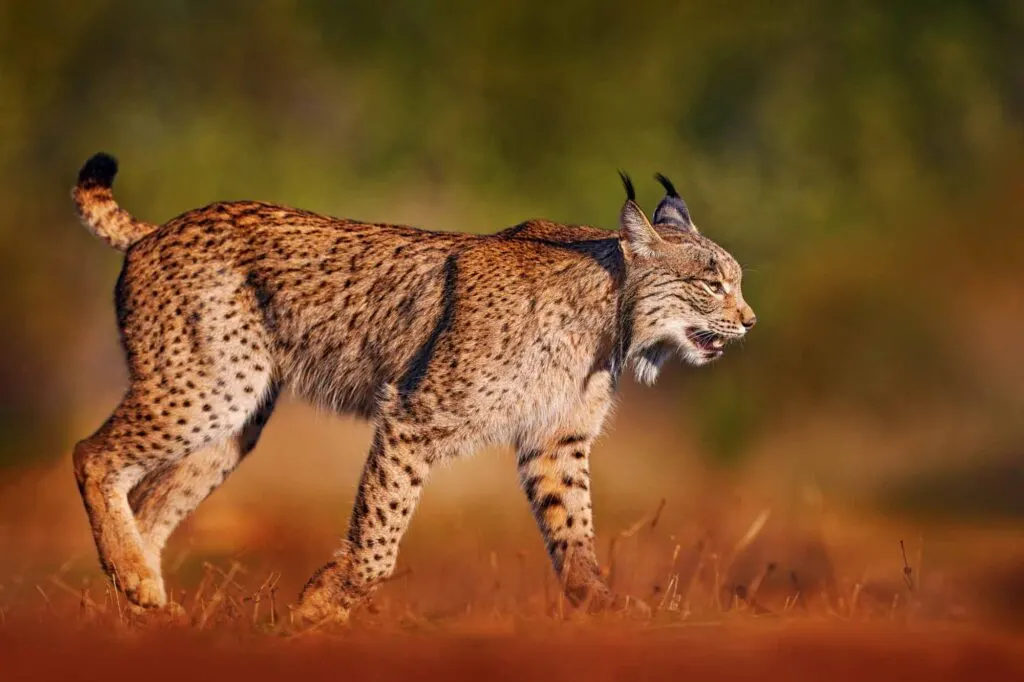Although there were many wild cats in Europe long ago, there are only three European wild cats.
These small and medium-sized felines spread throughout the continent are also quite interesting types of wild cats.
If you want to know about the lifestyle and behavior of the wild cats of Europe, keep reading!
Small Wild Cat in Europe
European Wildcat (Felis silvestris)

- Lifespan: 12 to 16 years
- Tail length: 13.6 inches
- Body length: around 26 inches
- Height: 12 inches
- Weight: around 17 pounds
- Top speed: 30 mph
European wildcats are small species native to Europe, from the United Kingdom to Turkey.
These small felines are brownish to gray with black stripes throughout the head and body.
Where there is human activity, these wild cats will be nocturnal. Still, when undisturbed, it might be active during the daytime.
They prey on rats, voles, birds, frogs, lizards, hares, and weasels.
Although their conservation status (just like the African wildcat, Felis lybica) is Least Concern on the IUCN Red List, European wildcat populations have been experiencing a decline due to habitat loss, fragmentation, and hunting.
European wildcat subspecies:
- Scottish wildcat (Felis silvestris silvestris)
- Caucasian wildcat (Felis silvestris caucasica)
Did you know? A group of wild cats is called destruction. We wonder what these felines have done in the past to deserve this name!
Medium Wild Cats in Europe
Eurasian Lynx (Lynx lynx)

- Lifespan: 15 to 17 years
- Tail length: 4.3 to 9.6 inches
- Body length: 29 to 42 inches
- Height: 22 to 30 inches
- Weight: 26 to 71 pounds
- Top speed: 50 mph
Eurasian lynxes are among the select number of wild cats in Europe. These felines are primarily distributed throughout Northern, Central, and Eastern Europe as well as Central Asia. Central Europe has a relatively large but isolated population in the Carpathian Mountains.
In addition, Eurasian lynxes have reddish or brown fur coats in the summer and grayish in the winter.
These European wild cats have a striking appearance with dark dotted bodies and pointed ears.
However, the chances you can see a Eurasian lynx in the wild are small since they are primarily nocturnal and quite silent animals.
From birds to deer, these wild cats in Europe have a broad buffet. Still, gray wolves and wolverines pose a significant threat to Eurasian lynxes.
Eurasian lynx subspecies:
- Northern lynx (Lynx lynx lynx)
- Turkestan lynx (Lynx lynx isabellinus)
- Caucasian lynx (Lynx lynx dinniki)
- Siberian lynx (Lynx lynx wrangeli)
- Balkan lynx (Lynx lynx balcanicus)
- Carpathian lynx (Lynx lynx carpathicus)
Did you know? Lynxes have incredible eyesight. They can see a mouse from 250 feet away!
Iberian Lynx (Lynx pardinus)

- Lifespan: up to 13 years
- Tail length: 4.9 to 6.3 inches
- Body length: 26 to 32 inches
- Height: 23 to 27 inches
- Weight: 15 to 35 pounds
- Top speed: 50 mph
Unlike the Eurasian lynx, which is the wild cat in Europe with the broadest distribution, the Iberian lynx is endemic to a small part of the Iberian Peninsula.
Listed as Endangered on the IUCN Red List, these European wild cats had a substantial population decline in the 1900s because of poaching, overhunting, fragmentation of habitats, and the population decline of its main prey species, the European rabbit.
Appearance-wise, the Iberian lynxes have bright yellowish to tawny fur coats covered with dark spots. They are smaller than European lynxes.
They prey on European habit, red-legged partridge, rodents, and wild ungulates.
Did you know? The Iberian lynx is among the most endangered cat species and was on the brink of extinction a few years ago. Still, because of improved conservation measures, its population went from 146 individuals in 2000 to 1,111 as of 2021.[1]
FAQ About Wild Cats in Europe
How many wild cats are in Europe?
Currently, there are three wild cats in Europe: European wildcat, Eurasian lynx, and Iberian lynx.
Are there any big cats in Europe?
No, at least, not native. The only continents with native big cats are Africa, the Americas, and Asia.

Patricia Prentice
Saturday 17th of September 2022
All this information I find completely fascinating.